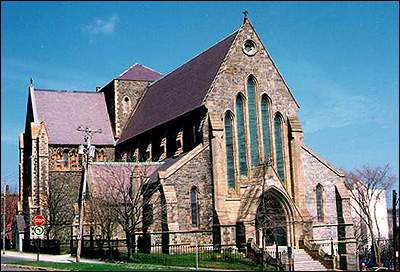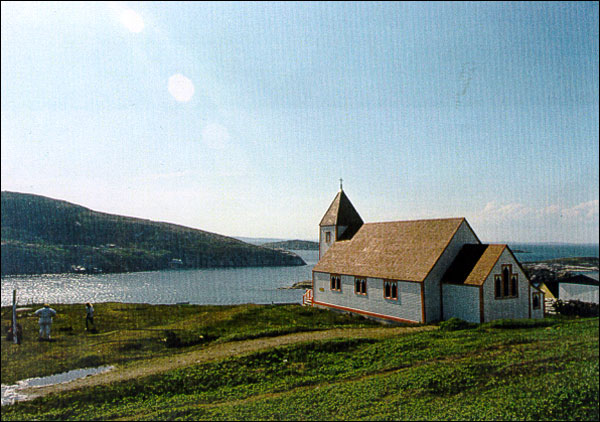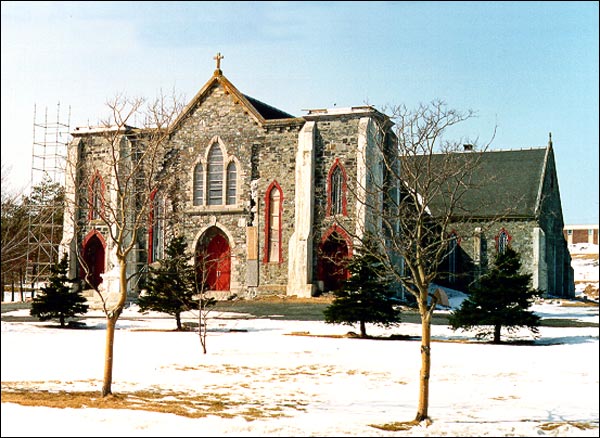Divergent Paths: The Development of Newfoundland Church Architecture
The following essay is adapted from a lecture given by Shane O'Dea to the Newfoundland Historical Society on September 23, 1982.

There is a marked distinction in the architecture of religious buildings in Newfoundland, a distinction determined at first by period and then by denomination. The earliest churches, built before 1846, tended to be similar to each other, and essentially primitive or at least simple. In the 1840s the cathedrals of both the Roman Catholic and the Anglican Churches were begun in the capital and these had a significant effect on churches later constructed by these denominations. In consequence, when looking at Newfoundland's religious architecture, one is looking at an early period that runs from 1662 to 1800, followed by a span of limited development (1800-1846), then by a interval of cathedral building, and finally by a period when these cathedrals influenced other construction. This essay focuses on the latter two phases of church architectural development.
The churches built before 1820 tended to be rudimentary buildings, lacking towers, steeples and chancels, and were almost indistinguishable from local fish stores. Distinctions began to develop when the two major denominations, Anglican and Roman Catholic, began to build their respective cathedrals. The Roman Catholic community built their cathedral as a Romanesque Revival structure. The Anglicans, led by Bishop Edward Feild and architect Sir Gilbert Scott, were influenced by a Gothic Revival style of architecture.

In an effort to establish and promote the use of Gothic Revival architecture in Newfoundland, Bishop Feild brought over noted English architect William Grey as principal of Queen's College and made him diocesan architect. Grey designed numerous wooden Anglican churches in rural Newfoundland that combined local materials and craftsmanship to create models for other clergymen to follow. The last surviving church designed by Grey is St. James Anglican Church in Battle Harbour, Labrador.
Although Grey left Newfoundland in 1857 and Bishop Feild died in 1876 their architectural influence did not. The Gothic Revival remained the definitive Anglican style until after the First World War. In 1892 the congregation in Trinity borrowed a design from Nova Scotia and built the finest surviving Anglican Church in Newfoundland.
The Catholic churches built in the latter half of the nineteenth and early twentieth century do not show the same commitment to one architectural style. J. J. McCarthy of Dublin designed St. Patrick's, one of the earliest Catholic churches planned after the Basilica, in the Gothic style. McCarthy was an associate of a leading figure in the English Gothic Revival movement, A. W. N. Pugin. St. Patrick's design appears inspired by Pugin's design for St. Mary's in Killarney, Ireland.

But for Newfoundland Catholics renaissance or classical models came to dominate. In the 1880s in Harbour Grace, Rev. Father Henry Carfagnini designed the Cathedral of Immaculate Conception and modelled after St. Peter's in Rome. Unfortunately, the first cathedral was destroyed by fire in 1889.
In the twentieth century, renaissance forms have been used more readily in the construction of Catholic churches. This reflects the religious and cultural connection between Catholicism and Rome, and possibly, a desire to distinguish itself from Anglicanism.




